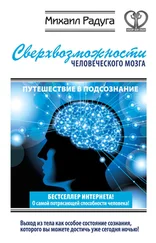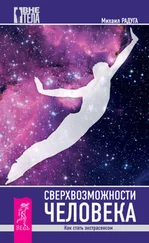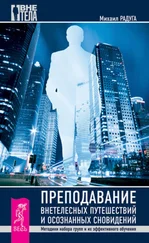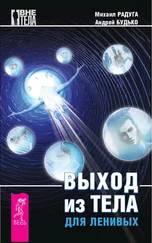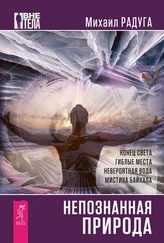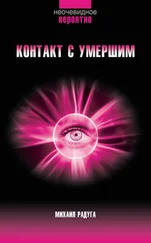Бесспорно, существуют популярные профессии, которые угрожают жизни. Например, десятка самых опасных профессий в США выглядит следующим образом (по возрастанию): садовник, строитель, монтажник металлоконструкций, фермер, водитель, мусорщик, кровельщик, летчик, рыбак и лесоруб. Но даже среди лесорубов за год погибает только один человек из тысячи, то есть за десять лет накапливается «всего лишь» 1% вероятности гибели 195 195 Bureau of Labor Statistics. (2019, December 17). National Census of Fatal Occupational Injuries in 2018 [Press release].
Конец ознакомительного фрагмента.
Текст предоставлен ООО «ЛитРес».
Прочитайте эту книгу целиком, купив полную легальную версию на ЛитРес.
Безопасно оплатить книгу можно банковской картой Visa, MasterCard, Maestro, со счета мобильного телефона, с платежного терминала, в салоне МТС или Связной, через PayPal, WebMoney, Яндекс.Деньги, QIWI Кошелек, бонусными картами или другим удобным Вам способом.
Raduga, Michael & Kuyava, Oleg & Sevcenko, Natalia. (2020). Is there a relation among REM sleep dissociated phenomena, like lucid dreaming, sleep paralysis, out-of-body experiences, and false awakening?. Medical Hypotheses. 144.
Raduga, Michael. (2020). Optimal sleep duration and its deviation outcomes from the perspectives of REM sleep dissociative phenomena.
Garg, Shikha & Kim, Lindsay & Whitaker, Michael & O’Halloran, Alissa & Cummings, Charisse & Holstein, Rachel & Prill, Mila & Chai, Shua & Kirley, Pam & Alden, Nisha & Kawasaki, Breanna & Yousey-Hindes, Kimberly & Niccolai, Linda & Anderson, Evan & Openo, Kyle & Weigel, Andrew & Monroe, Maya & Ryan, Patricia & Henderson, Justin & Fry, Alicia. (2020). Hospitalization Rates and Characteristics of Patients Hospitalized with Laboratory-Confirmed Coronavirus Disease 2019 – COVID-NET, 14 States, March 1—30, 2020. Morbidity and Mortality Weekly Report . 69.
Lindqvist, Pelle & Epstein, Elisabeth & Nielsen, Kari & Landin-Olsson, Mona & Ingvar, C. & Olsson, Håkan. (2016). Avoidance of sun exposure as a risk factor for major causes of death: A competing risk analysis of the Melanoma in Southern Sweden cohort. Journal of Internal Medicine . 280.
Felder, Stefan. (2006). The gender longevity gap: Explaining the dierence between singles and couples. Journal of Population Economics . 19.
Dunstan, D. & Barr, Elizabeth & Healy, Genevieve & Salmon, Jo & Shaw, Jonathan & Balkau, Beverley & Magliano, Dianna & Cameron, Adrian & Zimmet, P & Owen, Neville. (2010). Television Viewing Time and Mortality: The Australian Diabetes, Obesity and Lifestyle Study (AusDiab). Circulation . 121.
Veerman, Jacob & Healy, Genevieve & Cobiac, Linda & Vos, Theo & Winkler, Elisabeth & Owen, Neville & Dunstan, D.. (2011). Television viewing time and reduced life expectancy: A life table analysis. British journal of sports medicine. 46.
Wijndaele, Katrien & Brage, Soren & Besson, Herve. (2011). Television viewing time independently predicts all-cause and cardiovascular mortality: The EPIC Norfolk Study. Int J Epidemiol . 40.
Jakes, Rupert & Day, N.E. & Khaw, K-T & Luben, R & Oakes, S & Welch, Ailsa & Bingham, S & Wareham, N.J.. (2003). Television viewing and low participation in vigorous recreation are independently associated with obesity and markers of cardiovascular disease risk: EPIC-Norfolk population-based study. European journal of clinical nutrition . 57.
Chang, Pei-Chia & Li, Tsai-Chung & Wu, Ming-Tsang & Liu, Chiu-Shong & Li, Chia-Ing & Chen, Ching-Chu & Lin, Wen-Yuan & Yang, Shin-Yuh & Lin, Cheng-Chieh. (2008). Association between Television Viewing and the Risk of Metabolic Syndrome in a Community-based Population. BMC public health . 8.
Stamatakis, Emmanuel & Hamer, Mark & Dunstan, D. (2011). Screen-Based Entertainment Time, All-Cause Mortality, and Cardiovascular Events: Population-Based Study With Ongoing Mortality and Hospital Events Follow-Up. Journal of the American College of Cardiology . 57.
Helajärvi, Harri & Pahkala, Katja & Juonala, Markus & Oikonen, Mervi & Tammelin, Tuija & Hutri-Kähönen, Nina & Kähönen, Mika & Lehtimäki, Terho & Mikkilä, Vera & Viikari, Jorma & Raitakari, Olli. (2015). Television viewing and fatty liver in early midlife. The Cardiovascular Risk in Young Finns Study. Annals of medicine . 47.
Hamer, Mark & Yates, Thomas & Demakakos, Panayotes. (2017). Television viewing and risk of mortality: Exploring the biological plausibility. Atherosclerosis . 263.
Nguyen, Long & Liu, Po-Hong & Zheng, Xiaobin & Keum, NaNa & Zong, Xiaoyu & Li, Xiao & Wu, Kana & Fuchs, Charles & Ogino, Shuji & ng, Kanyanut & Willett, Walter & Chan, Andrew & Giovannucci, Edward & Cao, Yin. (2018). Sedentary Behaviors, TV Viewing Time, and Risk of Young-Onset Colorectal Cancer. Jnci Cancer Spectrum . 2.
Sun, Jiang-Wei & Zhao, Long-Gang & Yang, Yang & Ma, Xiao & Wang, Ying-Ying & Xiang, Yong-Bing. (2019). Systematic Reviews and Meta-and Pooled Analyses Association Between Television Viewing Time and All-Cause Mortality: A Meta-Analysis of Cohort Studies.
Junco, Reynol. (2012). Too much face and not enough books: The relationship between multiple indices of Facebook use and academic performance. Computers in Human Behavior . 28.
Zhou, Zhenhe & Zhou, Hongliang & Zhu, Hongmei. (2015). Working memory, executive function and impulsivity in Internet-addictive disorders: a comparison with pathological gambling. Acta neuropsychiatrica . 28.
Ioannidis, Konstantinos & Hook, Roxanne & Goudriaan, Anna & Vlies, Simon & Fineberg, Naomi & Grant, Jon & Chamberlain, Samuel. (2019). Cognitive deficits in problematic internet use: meta-analysis of 40 studies. The British Journal of Psychiatry . 1—8.
Lepp, Andrew & Barkley, Jacob & Karpinski, Aryn. (2014). The relationship between cell phone use, academic performance, anxiety, and Satisfaction with Life in college students. Computers in Human Behavior . 31.
Reed, Phil & Reay, Emma. (2015). Relationship between levels of problematic Internet usage and motivation to study in university students. Higher Education . 70.
Türel, Yalın & Toraman, Muhammet. (2015). The Relationship between Internet Addiction and Academic Success of Secondary School Students. Anthropologist . 20.
Читать дальше


